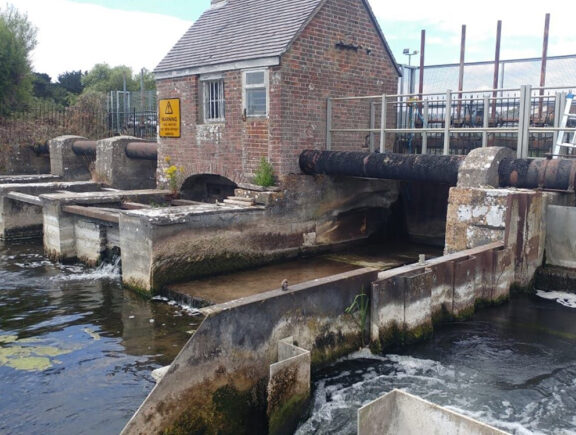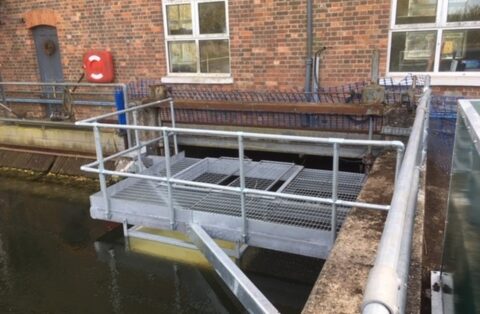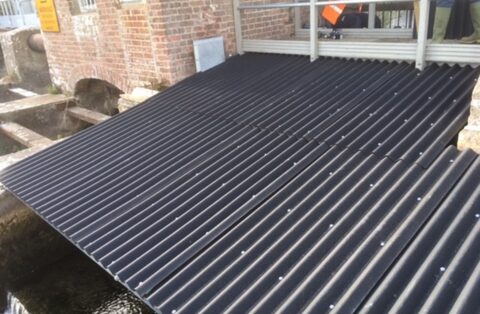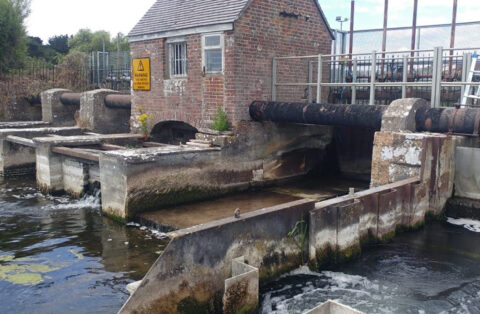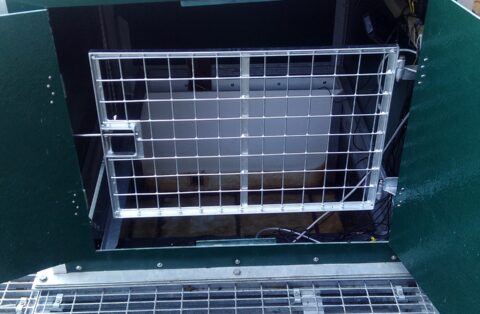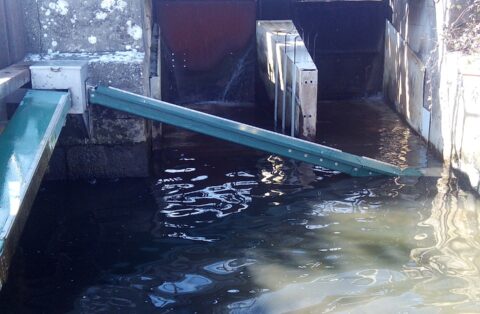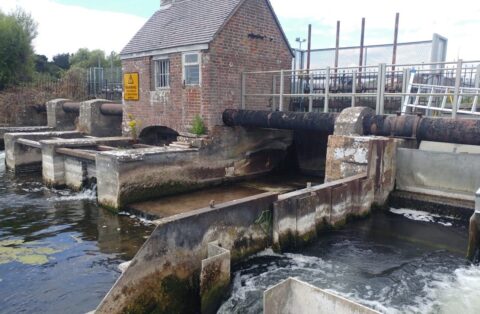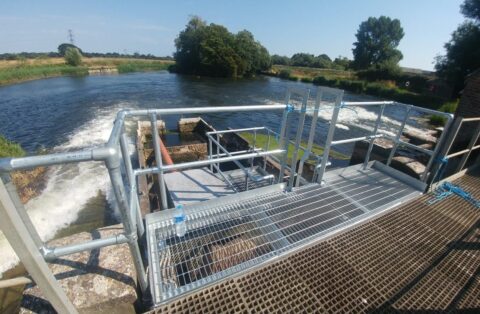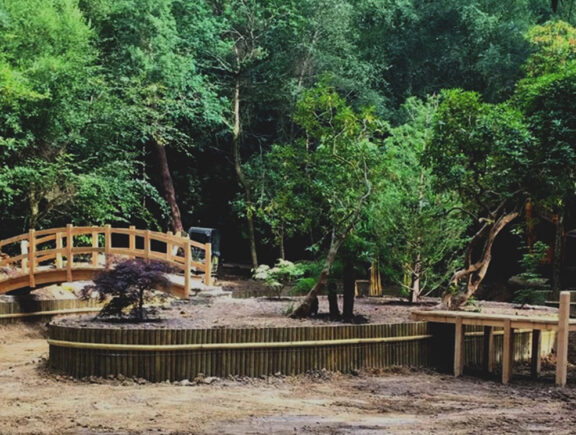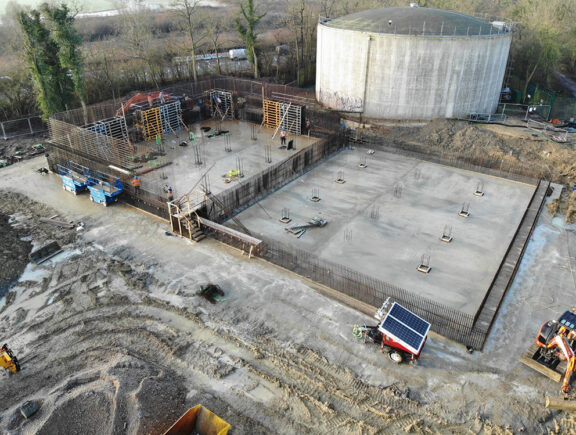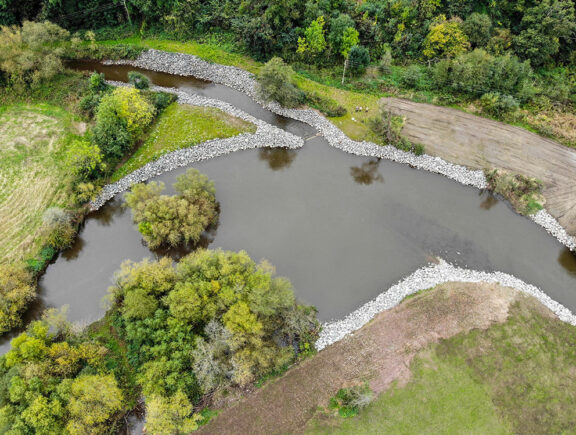The chamber at the Turbine House accommodates telemetry and a camera which allows specific species to be identified once overall numbers have been recorded via the sensors in the chamber and elsewhere at the Great Weir. Due to its age, Stonbury replaced it with a new in-house fabricated fiberglass fish counter chamber, which was lifted into place under the Turbine House using a crane. This specially designed chamber contained an access gate so that operatives were protected from the drop into the chamber when accessing to survey the equipment and clean the electrodes.
To provide safe access to the new counter, surrounding access infrastructure was also improved to bring it up to health and safety legislation. The design of which was challenging because the water level was too high to install support legs, which would have also interfered with the positioning of the trash screen. The engineers therefore designed a counter-levered gantry to be suspended on the two existing walls. The design was calculated to ensure it was strong enough to support the weight of multiple operatives. The gantry was fabricated in-house and was lifted into place via a crane.
Built in 1926, The Great Weir has a series of sluice gates which are individually controlled to maintain constant upstream water levels for abstraction. Glass Reinforced Plastic (GRP) floor and side panels were used to line the individual channels on the downstream side of the sluice gates to house the electrodes, but these had become degraded over time. Therefore, after isolating the channels using the existing slice gates, Stonbury re-lined a total of eight channels with new GRP side and floor panels that had been fabricated to contain new electrodes.
Stonbury engineers also fabricated and installed steel dividing structures where existing ones had become warped and damaged. The newly constructed structures were re-designed to provide greater resilience against heavy flows. These were then covered in the new GRP-electrode sheets. These structures, present between each slice gate, channels water flow and provides surface with which to accurately capture fish numbers when all gates are open. A protective sunlight cover was then installed to reduce the algae growing on or near the electrodes, as this can affect the readings.
To cater for eels, which are unable to swim and jump through the sluice gates, Stonbury designed, fabricated and initialled two brush-style gravity fed eel ramps, which deposits eels upstream. A smaller pass, designed to be removable, allows an additional route for elver movement in the breeding season, but detaches to allow all hatches to open at other times. Finally, the team updated the access at the Great Weir, including a walkway and ladder to enable operatives to safely clean the electrodes and manage the eel pass.
